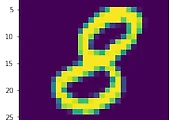Tensorflow Object Detection API _ CentOS7 설치
https://github.com/tensorflow/models/blob/master/object_detection/g3doc/installation.md
[패키지 다운로드]
# yum install protobuf-compiler
# pip install Pillow --proxy http://PROXYIP:PROXYPORT --trusted-host pypi.python.org 또는 #>pip3.6 install Pillow
# pip install lxml --proxy http://PROXYIP:PROXYPORT --trusted-host pypi.python.org
# pip install matplotlib --proxy http://PROXYIP:PROXYPORT --trusted-host pypi.python.org
텐서플로, 주피터 설치 http://pubdata.tistory.com/100
# pip install tensorflow
# pip install jupyter
[API 라이브러리 다운로드]
model들을 받을 폴더를 하나 만들고
# mkdir tensorflowmodels
# cd tensorflowmodels
tensorflowmodels]# git clone http://github.com/tensorflow/models
tensorflowmodels]# cd models
models 폴더에서
models]# protoc object_detection/protos/*.proto --python_out=.
-> 여기서 문제 발생
object_detection/protos/anchor_generator.proto:11:3: Expected "required", "optional", or "repeated".
object_detection/protos/anchor_generator.proto:11:32: Missing field number.
라고 나타난다면 protoc를 재설치해야한다. yum으로 설치해서 버전이 낮은가..
protoc_3.3 버전 설치
tensorflow$ mkdir protoc_3.3
tensorflow$ cd protoc_3.3
tensorflow/protoc_3.3$ wget wget https://github.com/google/protobuf/releases/download/v3.3.0/protoc-3.3.0-linux-x86_64.zip
tensorflow/protoc_3.3$ chmod 775 protoc-3.3.0-linux-x86_64.zip
tensorflow/protoc_3.3$ unzip protoc-3.3.0-linux-x86_64.zip
tensorflow/protoc_3.3$ cd ../models/
tensorflow/protoc_3.3$ /home/humayun/tensorflow/protoc_3.3/bin/protoc object_detection/protos/*.proto --python_out=.
이렇게 실행했을때 아무런 경고 메시지가 안나타나야 정상 동작
models]# PATH=$PATH:`pwd`:`pwd`/slim
models]# PYTHONPATH=$PYTHONPATH:`pwd`:`pwd`/slim
models]# echo $PATH
[테스트]
models]# python object_detection/builders/model_builder_test.py
실행하면
Ran 7 tests in 0.017s
OK
라고 나타난다.
[ipython notebook]
아래 코드는 object_detection_tutorial.ipynb 튜토리얼입니다.
import numpy as np
import os
import six.moves.urllib as urllib
import sys
import tarfile
import tensorflow as tf
import zipfile
from collections import defaultdict
from io import StringIO
from matplotlib import pyplot as plt
from PIL import Image
# This is needed to display the images.
%matplotlib inline
# This is needed since the notebook is stored in the object_detection folder.
sys.path.append("..")
from utils import label_map_util
from utils import visualization_utils as vis_util
# What model to download.
MODEL_NAME = 'ssd_mobilenet_v1_coco_11_06_2017'
MODEL_FILE = MODEL_NAME + '.tar.gz'
DOWNLOAD_BASE = 'http://download.tensorflow.org/models/object_detection/'
# Path to frozen detection graph. This is the actual model that is used for the object detection.
PATH_TO_CKPT = MODEL_NAME + '/frozen_inference_graph.pb'
# List of the strings that is used to add correct label for each box.
PATH_TO_LABELS = os.path.join('data', 'mscoco_label_map.pbtxt')
NUM_CLASSES = 90
opener = urllib.request.URLopener()
opener.retrieve(DOWNLOAD_BASE + MODEL_FILE, MODEL_FILE)
tar_file = tarfile.open(MODEL_FILE)
for file in tar_file.getmembers():
file_name = os.path.basename(file.name)
if 'frozen_inference_graph.pb' in file_name:
tar_file.extract(file, os.getcwd())
detection_graph = tf.Graph()
with detection_graph.as_default():
od_graph_def = tf.GraphDef()
with tf.gfile.GFile(PATH_TO_CKPT, 'rb') as fid:
serialized_graph = fid.read()
od_graph_def.ParseFromString(serialized_graph)
tf.import_graph_def(od_graph_def, name='')
label_map = label_map_util.load_labelmap(PATH_TO_LABELS)
categories = label_map_util.convert_label_map_to_categories(label_map, max_num_classes=NUM_CLASSES, use_display_name=True)
category_index = label_map_util.create_category_index(categories)
def load_image_into_numpy_array(image):
(im_width, im_height) = image.size
return np.array(image.getdata()).reshape(
(im_height, im_width, 3)).astype(np.uint8)
# For the sake of simplicity we will use only 2 images:
# image1.jpg
# image2.jpg
# If you want to test the code with your images, just add path to the images to the TEST_IMAGE_PATHS.
PATH_TO_TEST_IMAGES_DIR = 'test_images'
TEST_IMAGE_PATHS = [ os.path.join(PATH_TO_TEST_IMAGES_DIR, 'image{}.jpg'.format(i)) for i in range(1, 3) ]
# Size, in inches, of the output images.
IMAGE_SIZE = (24, 16)
with detection_graph.as_default():
with tf.Session(graph=detection_graph) as sess:
for image_path in TEST_IMAGE_PATHS:
image = Image.open(image_path)
# the array based representation of the image will be used later in order to prepare the
# result image with boxes and labels on it.
image_np = load_image_into_numpy_array(image)
# Expand dimensions since the model expects images to have shape: [1, None, None, 3]
image_np_expanded = np.expand_dims(image_np, axis=0)
image_tensor = detection_graph.get_tensor_by_name('image_tensor:0')
# Each box represents a part of the image where a particular object was detected.
boxes = detection_graph.get_tensor_by_name('detection_boxes:0')
# Each score represent how level of confidence for each of the objects.
# Score is shown on the result image, together with the class label.
scores = detection_graph.get_tensor_by_name('detection_scores:0')
classes = detection_graph.get_tensor_by_name('detection_classes:0')
num_detections = detection_graph.get_tensor_by_name('num_detections:0')
# Actual detection.
(boxes, scores, classes, num_detections) = sess.run(
[boxes, scores, classes, num_detections],
feed_dict={image_tensor: image_np_expanded})
# Visualization of the results of a detection.
vis_util.visualize_boxes_and_labels_on_image_array(
image_np,
np.squeeze(boxes),
np.squeeze(classes).astype(np.int32),
np.squeeze(scores),
category_index,
use_normalized_coordinates=True,
line_thickness=3)
plt.figure(figsize=IMAGE_SIZE)
plt.imshow(image_np)
'Data > TensorFlow' 카테고리의 다른 글
| TensorFlow Mac 설치, jupyter Notebook 설치 (2) | 2017.12.10 |
|---|---|
| k-means clustering 군집화 (0) | 2017.04.17 |
| MNIST 데이터로 KNN 분류기, 성능 측정 (1) | 2017.04.17 |
| MNIST 데이터 집합 읽어오기, 이미지로 나타내기 (1) | 2017.04.14 |
| 선형 회귀 알고리즘 구현, 비용함수, 경사하강법 (0) | 2017.04.14 |


